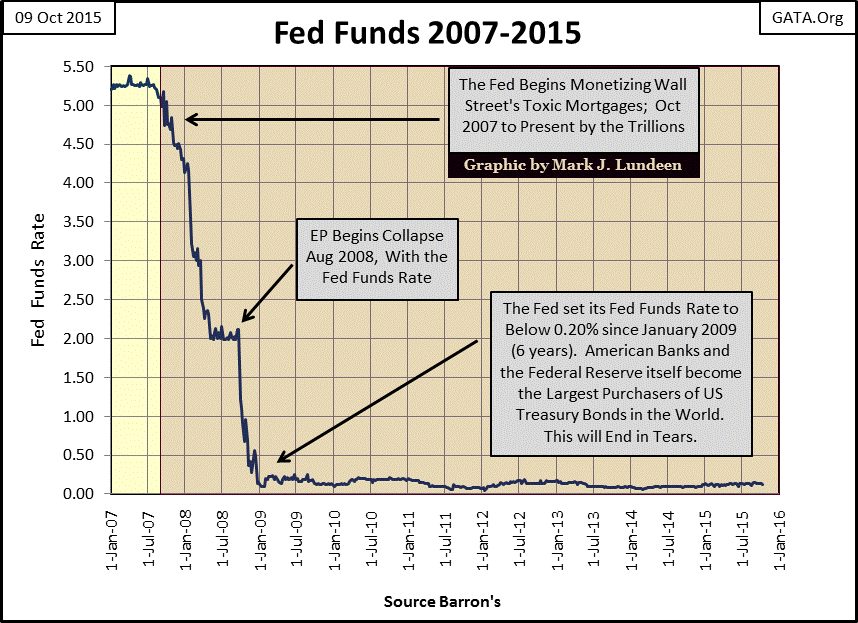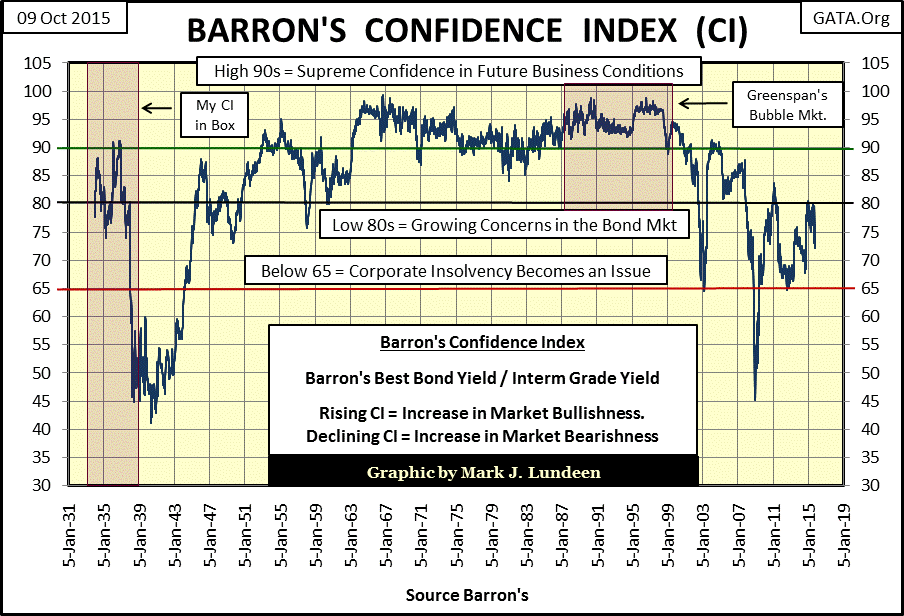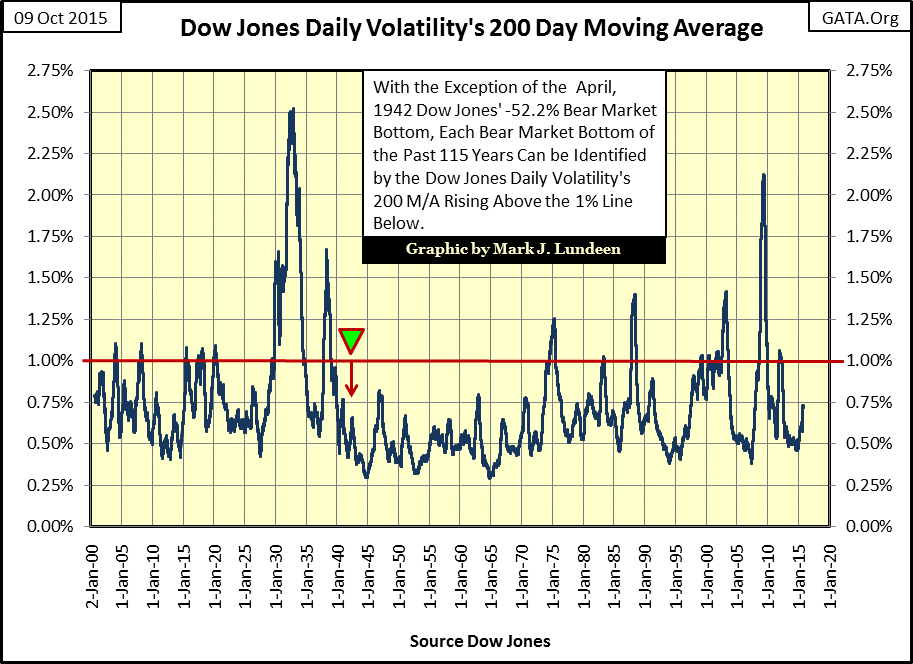More Reasons To Be Bearish On The Markets Than Bullish
The Dow Jones has made some nice gains since its lows of August 25th; 1,418 points or 9%, ending the week at over 17,000. However looking at the blue plot below, it’s evident the Dow still has a good way to go to reach its last all-time high of May 19th (18,312). Can it break above its high of May? Better ask Janet Yellen; she’s the one “injecting” joy-juice into the markets. But let’s suppose the Dow Jones manages to eke out another new all-time high – then what? Is it on to 19,000? Well anything is possible when considering a number on financial assets in our inflationary world…but is it probable?
I’m still a big bear, so it’s too soon for me to be speculating about whether the Dow Jones can make it to 19,000, let alone break above its last all-time high. The Dow Jones is still 1,228 points or 7.65% away from its all-time high of 18,312 reached on May 19th. It may be over half way back from its last all-time high, but the burden of proof is still on the bulls whether the market can pull off another significant advance into record territory.
Keep in mind that central banking today is no longer as much fun as when Greenspan was Fed Chairman. Yellen’s legacy from the Greenspan and Bernanke Feds is a pair handcuffs binding her wrists. Thanks to Bernanke’s Zero Interest Rate Policy (ZIRP), she can no longer “stimulate” the economy by lowering interest rates. They’ve been at rock bottom since January 2009.
And ever since Greenspan became Fed Chairman in August 1987 the entire planet has become bloated with debt, much of which would quickly begin to default should interest rates ever rise back to where they were just seven years ago. Looking at the chart below clearly today’s bond yields are far below their historical range. How long can they stay this way?
When interest rates inevitably begin rising, the “policy makers” best efforts to maintain “stability” in the debt market are doomed. The bull market in stocks simply cannot endure rising interest rates. Rising interest rates will drive share prices down, but have the opposite effect on gold, silver and mining shares. There is no mystery about what will happen when flight capital seeks a safe harbor from the coming storm, just when.
When interest rates eventually return to pre-credit crisis levels, that’s all it will take to begin historic debt liquidation which is already occurring in the junk bond market. Elliott Wave International and Bloomberg recently published two charts on credit spreads – they’re blowing out. What does that mean? There are now more sellers than buyers in the junk bond market.
To save the banking system from itself, Doctor Bernanke fixed short-term interest rates below 0.25% where they’ve remained since December 2008. Bernanke’s ZIRP forced grandma and grandpa out of FDIC insured savings accounts into junk bonds to get the same interest income they once earned at a bank. This flow of funds from savings accounts into these highly risky bonds pushed junk bond yields down to nearly the same level as higher quality bonds. Now this flow of capital has reversed resulting in rising yields and falling prices in the “high yield” market.
The rising credit spreads seen below indicate Mr Bear is feeding on retirees’ principal in the “high-yield” bond market, and that’s a big problem for the FOMC. It’s not that they’re worried about grandma or grandpa. Their concern is that if this trend continues, a panic will develop as capital flees from the multi-trillion dollar “high-yield” bond market. And also that the Fed itself would become insolvent, as their leveraged multi-trillion dollar portfolio of junk bonds loses value, quickly destroying their equity.
These problems are not confined to junk bonds. Barron’s Confidence Index (CI) which uses two investment grade bond yields for its input has been falling since 1999, even as these same bond indexes have continued a bull market that began in 1981.
The high-tech bear market (2000 – 2002) took the confidence index down from 97 to 65, which then recovered to 90. Then the credit-crisis bear (2007-2009) took the confidence index from 90 down to 45, a level not seen since the depressing 1930s. After the March 2009 bottom it oscillated between 65 and 80, but since early July it has declined from 80 down to 72. The CI’s accuracy in predicting periods of crisis since 1999 has been excellent. If the CI continues its decline, it certainly won’t be good for Janet Yellen or for the stock market.
It’s not just Barron’s Confidence Index anticipating problems in the financial markets. The yield spread between Moody’s Aaa – Baa rated bonds (both investment grade) has declined from -0.54% to -1.35% since June of 2014. As with Barron’s Confidence Index above, the connection between bear markets in stocks and widening yield spreads in the bond market is clearly evident in the chart below. The severity of the sub-prime mortgage bear market compared to the high-tech bear is also apparent.
Corporate America has taken full advantage of the trillions of dollars flowing into the bond market to finance its share buyback programs, a use of borrowed money so stupid it should be illegal in our “regulated” markets. It’s reasonable to expect even greater yield spreads between these two Moody bond series in the next bear market as corporate America struggles to service the frivolous debt it took on during the good times when the economy turns down. I also expect the Dow Jones and the general stock market will see much deeper declines than they experienced during the credit crisis.
The stock market is just a sideshow to the bond market as far as “policy” is concerned, but one the “policy makers” can’t ignore as it’s the one financial market with broad based public participation. Looking at the Dow’s BEV chart below, I’d say that its BEV Zero of May 19th will prove to be the Terminal Zero (TZ: last all-time high of a bull market) of the post March 2009 market advance. After all, with every bull market there comes a time when advancing prices prove to be the last opportunity to sell and exit the market with your profits, I believe the stock market is at that point now. So until Mr Bear returns to take the market down to new lows I expect to see the Dow Jones oscillate between the 0% and -12.5% lines below. But even if the Dow Jones reaches new highs (make some new BEV Zeros below), there’s certainly more risk than reward in today’s stock market.
Let’s move on to Mr Bear’s report card. In the past two weeks we see two days of extreme market breadth. On September 28th daily declines overwhelmed advances, then a week later daily advances overwhelmed declines.

That’s a lot of days of extreme market breadth, something which only happens during bear markets. Looking below we see only fourteen days of extreme market breadth during Greenspan’s nineteen years at the Federal Reserve, during which we had the high-tech and housing bubbles. There were 106 days of extreme market breadth during Bernanke’s tenure at the Fed, when the Dow Jones saw the second deepest bear market decline since 1885.
Unlike the bullish years of the Greenspan Fed, the market advance since 2009 has been plagued with days of extreme market breadth. Since January 1926 where my breadth data begins, the only other period of market history with a similar dense cluster of NYSE 70% A-D days was during the depressing 1930s, which also enjoyed a substantial bull market advance (372%) from July 1932 to March 1937. Yes, the Great Depression years actually enjoyed a solid bull market. Then came the bear market of 1937 - 42 which drove an embittered general public away from Wall Street for the following four decades.
Bear markets are well recognized for increasing the daily volatility in the stock market, but on Mr Bear’s report card we see the 8 count has returned to zero. However the 8 count only shows the number of days the Dow Jones has move (+/-) 2% or more from a previous day’s closing price within the past eight days. Considering the Dow Jones hasn’t seen a 2% day since September 8th that’s to be expected, however the 200 (day) count remains at 8. If the 200 count stayed at 8 for the next 200 trading days that would be solid indication “stability” has been restored in the stock market. But the chart below plotting daily volatility for the Dow Jones since January 1900 shows market volatility is once again rising and that is very bearish.
With the exception of the April 1942 bear market bottom (Green Triangle), every bear market since 1900 occurred on rising volatility. Seeing the plot rise to the 1.00% line is proof positive Mr Bear has payed Wall Street a visit. Since January the 200 day M/A has increased from 0.48% to 0.73%. Should this trend in rising volatility continue there will be real excitement in the stock market when it breaks above 1.00%.
As I’ve said before, I’m a big stock-market bear as I see far more sound historical reasons for it to go down than up. The financial world, like Janet Yellen, is wrestling with a lot of unresolved problems left over from the Greenspan and Bernanke Feds. And then there are plenty of other problems with Russia, China, and the Middle East the Obama Administration has proven to be totally incapable of dealing with. One day a situation will arise that will impact the financial markets in a very negative way. Then I expect Mr Bear is going to give the bulls a body slam they won’t soon recover from.
Mark J. Lundeen

























